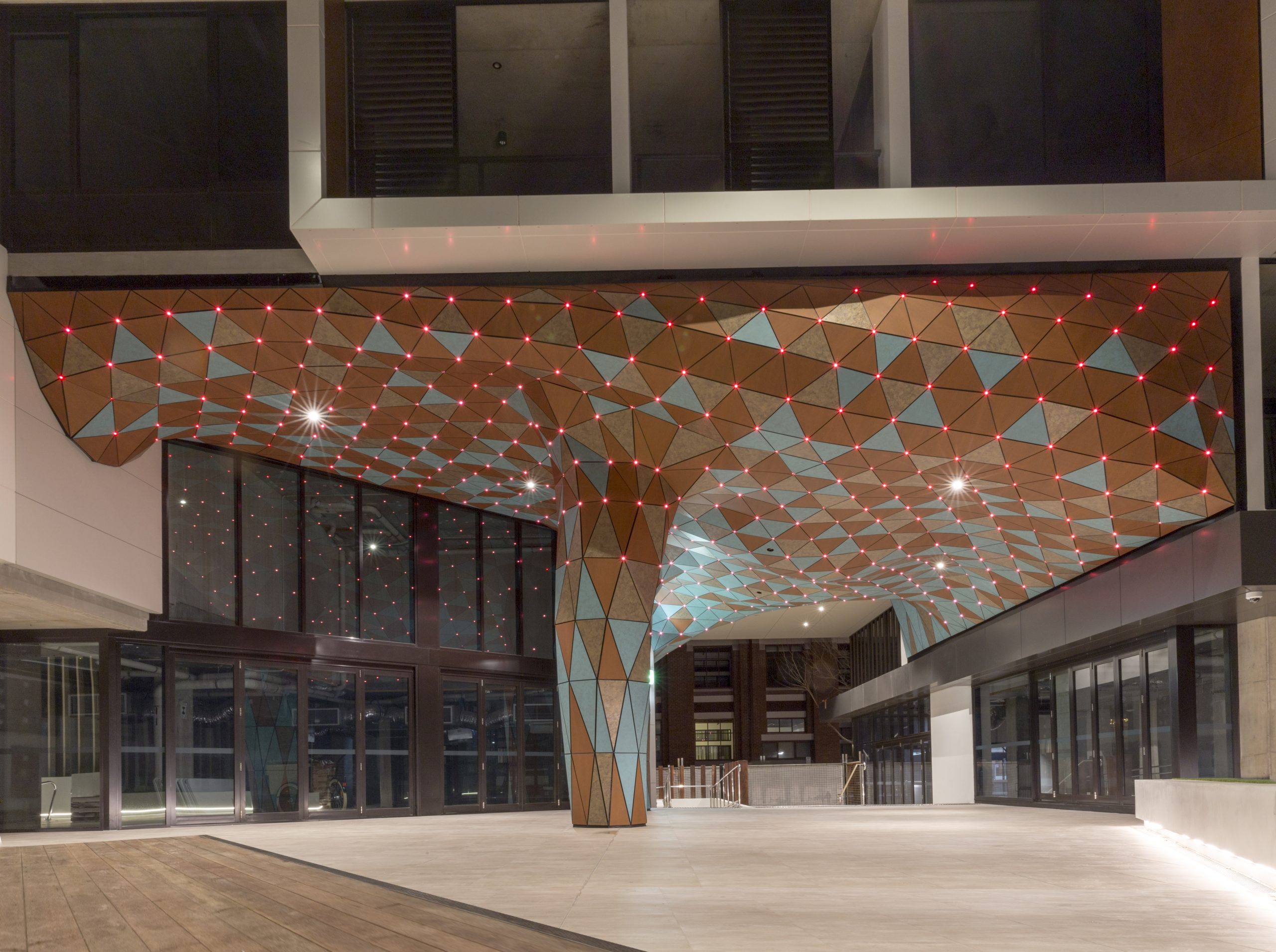
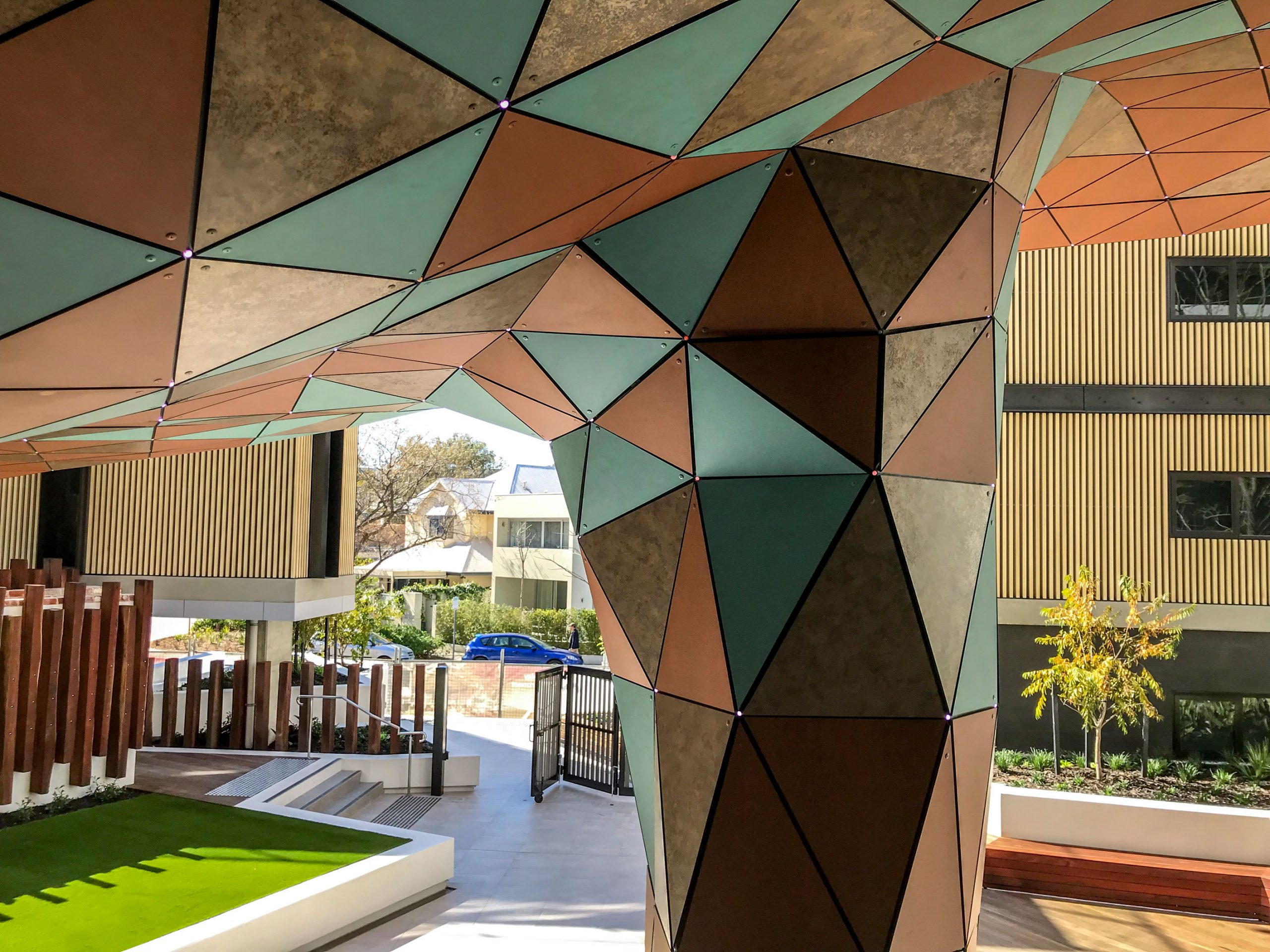
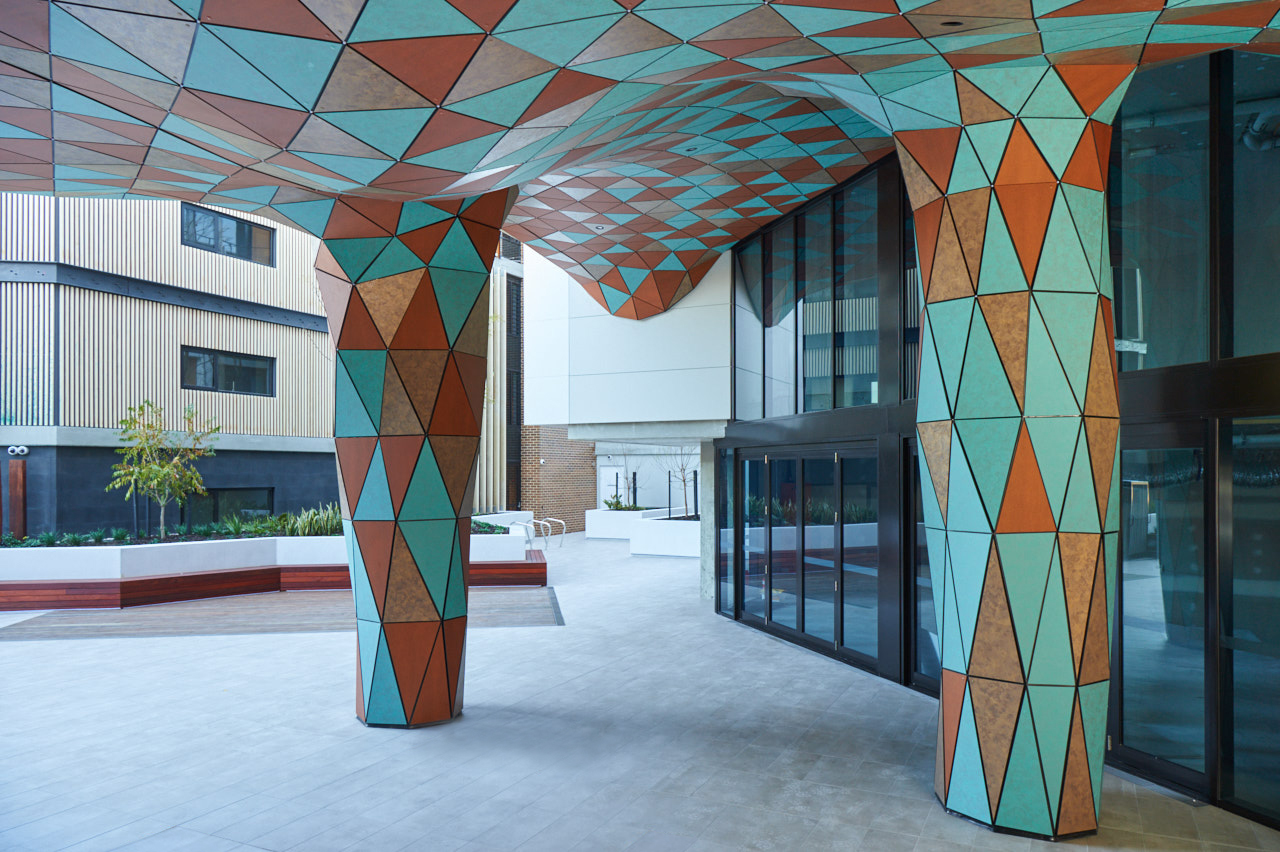
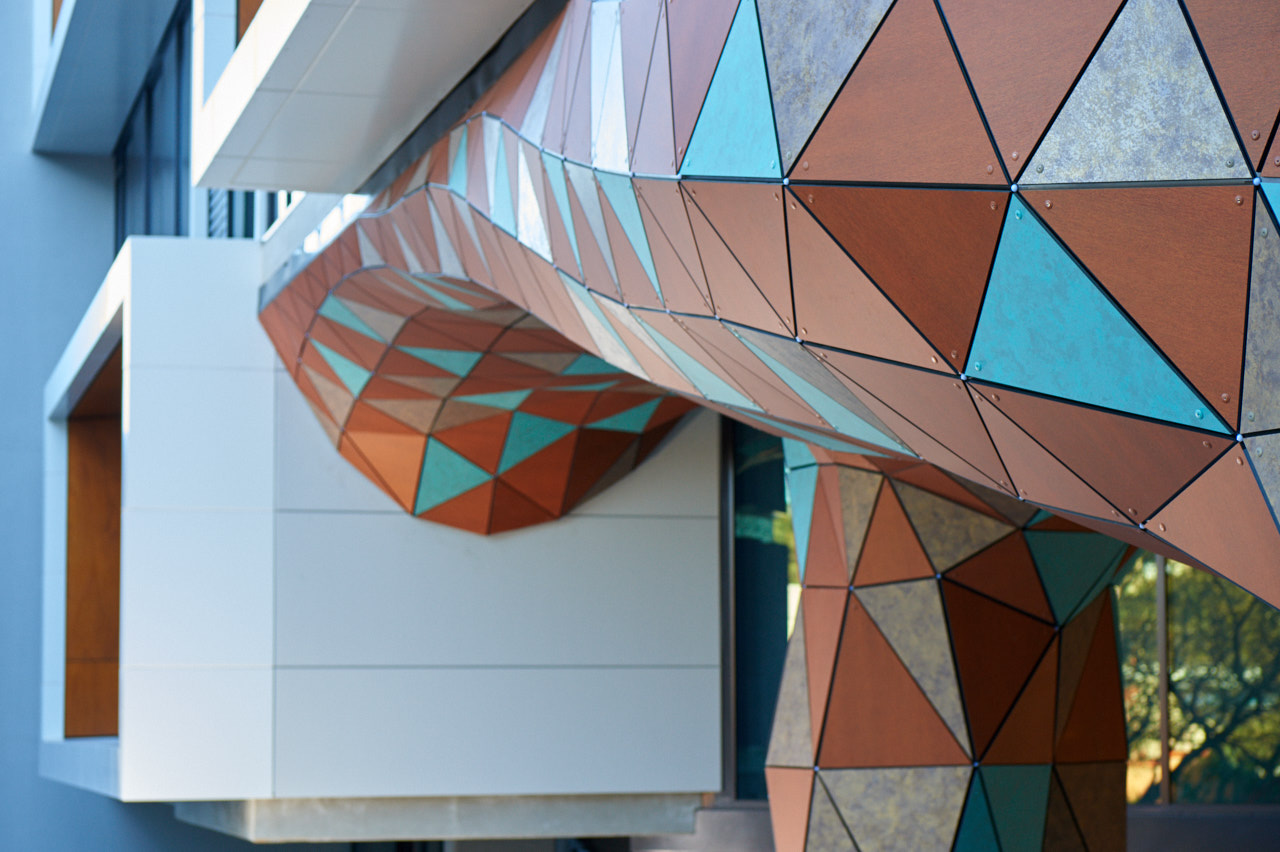
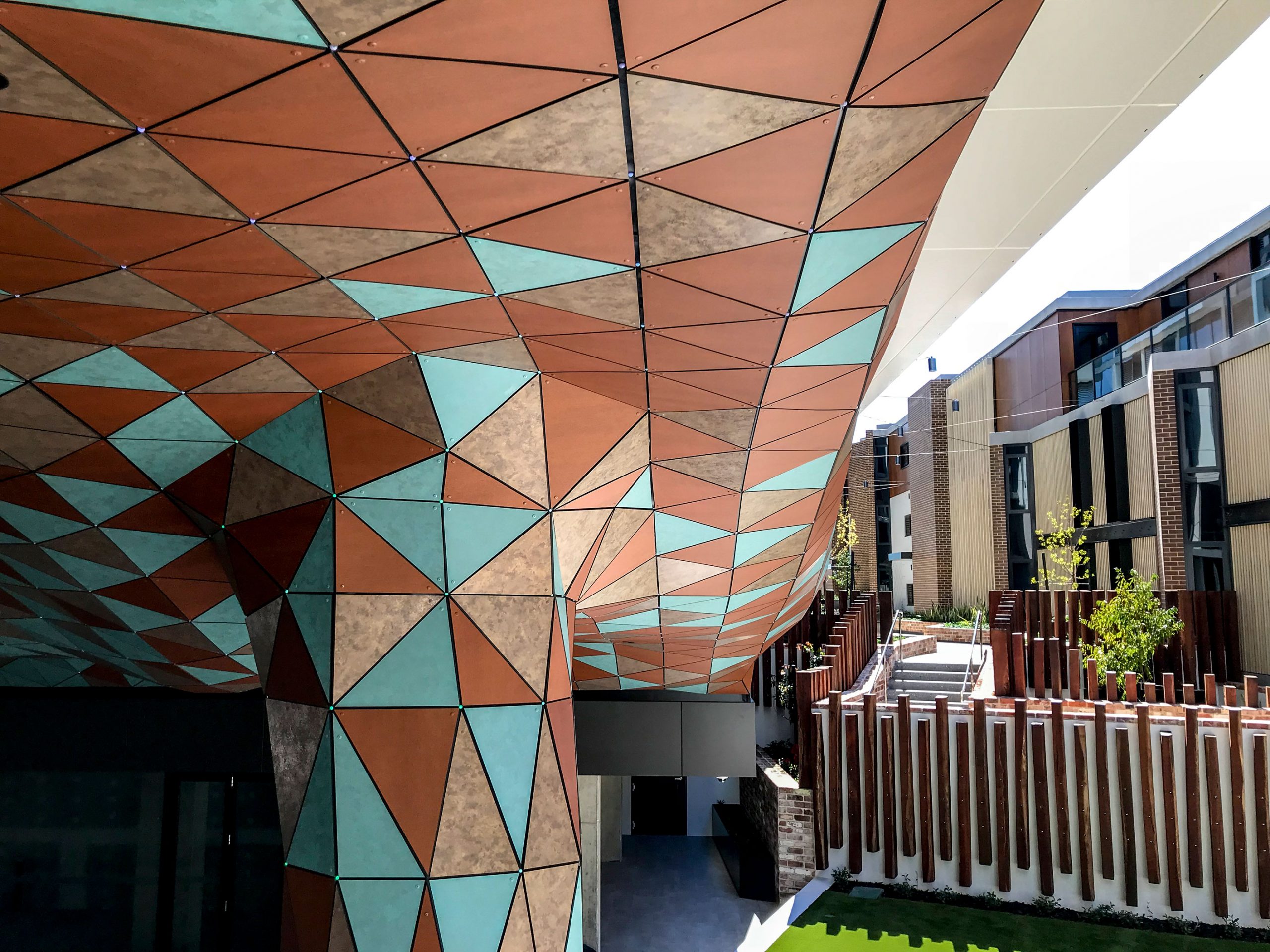

Client: Defence Housing Australia
Location: Perth, Australia
Completion date: 2019
Artwork budget: $500,000
Project Team
Artist
Daniel Giuffre
Intensive Fields Lab
Artist
Rick Vermey
Rick Vermey Art
Overview
Anemoi is a physical representation of the local prevailing winds known as the 'Fremantle Doctor'. Fremantle is a port city in Perth, Western Australia, and its’s character has largely emerged from its connection with the coast. The Anemoi artwork is a playful nod to this and the Freo Doctor, Fremantle’s dependable summer sea-breeze. Building upon this observation, the designers focused on the unseen but tangible forces of coastal winds, weather systems and oceanic currents and swells, to guide the development of this soffit treatment artwork. A cohesive abstracted sculptural form evolved, informed by representations of wind movement and direction such as meteorological mapping, bathymetric contours, the undulating ocean surface, charting of tidal swells and oceanic current flows, wind-filled sails, draping fishnets, emergent patterns in shipping route paths, billowing flags and shipping pennants. The materials, texture, colours and appearance conceptually reflect its surrounding context. Dynamic LED lighting is controlled by an anemometer installed on the roof which allows the weather to dictate the lighting patterns and colours in real-time. The behaviour of the wind is made visual, as light in motion.Goals
The artwork was highly integrated into the fabric of the building and the artist team worked closely with the architectural team, the contractors and the fabricators to ensure a seamless installation.
The process involved point cloud scanning the 'as built' and scanning the slab for the location of the PT strands to ensure the artwork sub-structure would fit within the space and miss the PT strands. The design process was created within a visual programming software known as Grasshopper 3D within Rhino 3D. This allowed for a highly coordinated process between the artists, architects and construction team, providing us with the flexibility to refine and adjust the geometry as the building was being constructed, which in turn, updated the shop drawings in real-time.
This workflow ensured a high quality, 'perfect fit' of the artwork into the building's corridor entrance.
Process
Artist Rick Vermey collaborated with Daniel Giuffre (if/LAB) to simulate the way the Fremantle Doctor moved through the entrance corridor. The form-finding process involved a physics-based software used to simulate a sail blowing in the wind. The surface mesh was hung from the soffit of the entrance corridor and then the wind simulation was used to generate the unique form.
The complex design required exceptional precision to ensure the numerous angled sections joined with accuracy. The artist team automated the production of all shop drawings required for the intricate task of fabricating and installing the artwork.
The artwork is designed to come alive at night, with over 800 individually programmable Philips Color Kinetics iColor MX2 LED light nodes arrayed at each panel intersection. The wind sensor allows the weather to control the ephemeral lighting patterns and colours. Wind speed corresponds with an increase or decrease in the playback speed of the lighting pattern transitions being displayed. Wind direction controls the selection of lighting patterns displayed. Lighting programming was achieved in collaboration with lighting control systems specialist firm, Light Application.
Additional Information
The name of the artwork was derived from the Greek work Anemoi ( Greek: Ἄνεμοι, "Winds" ) which is the collective term for the mythological Greek gods of the winds. The artwork covers over 200 square meters of ceiling soffit and column cladding surface area, using thousands of pieces and parts, all of which are unique. The geometry of the sculpted surface wraps around the laneway corridor ceiling and two structural columns, in a triangulated grid of faceted planes. The artwork is architectural in scale and fully integrated into the fabric and structure of the building. The crafted surface billows overhead, and undulates like an unfurling spinnaker sail through the laneway space. In a very physical sense, it creates an immersive experience, by enveloping the visitor, whether in transition through the passageway or seated in the café forecourt alfresco space. There are 1700 individual unique triangular cladding panels, in 3 colours, patinated copper green, rusted steel red and aged brass brown, all made from Trespa Meteon, a wood composite, high-pressure laminate product. These are mechanically fixed using colour-matched 16mm pan-head rivets, to an elaborate suspended sub-frame of black painted 4mm aluminium plate.